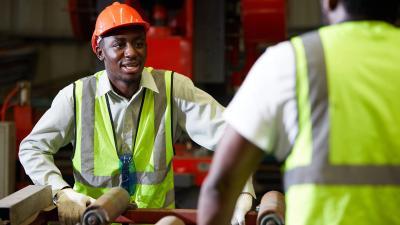
Engineering X grants £1mil to improve engineering education
Engineering X gives £1 million worth of grants to projects across 14 countries to boost the quality of engineering education and training.
Liaison Officer, FERRYSAFE Project
This page is approximately a 2 minute read
Nelson Dela Cruz Liaison Officer, FERRYSAFE Project
The lives of ferry passengers shouldn't depend on geography.
*The people pictured in this story are not those referenced in this profile. The following images are of ferry workers in the Philippines.
"South-east Asia accounts for more than half the world’s 2,000 plus annual ferry fatalities," says Nelson. “Ferry travel is a way of life in this part of the world. The Philippines alone has over 7,000 islands, which means that people are absolutely reliant on ferries for their day-to-day travel.”
Unfortunately, the Philippines has had a history of poor maritime safety, with little attention paid by the authorities or operators to key issues such as passenger queues, loading and disembarkation. “When the Princess of the Stars sank off the coast of Romblon in 2008, killing 814 people, it marked a sea change in the country’s attitude to ferry safety,” explains Nelson. “Everything changed after that. Beforehand, the Philippines had one of the worst ferry safety records in the world. Today, thanks to actions by ferry operators such as Archipelago Philippine Ferries Corporation (APFC), where safety is the new watchword, we’re approaching the global average.”
Funded by Lloyd’s Register Foundation and operated by industry body Interferry, the FERRYSAFE project has investigated how safety performance in the Philippines has been transformed. And while there’s no single answer, a number of factors stand out. Namely, the willingness of government to facilitate change; the development of reasonably stringent regulations; the weather-dependent prohibition of sailing permits; and the presence of local enforcement personnel.
Now FERRYSAFE is set to share the lessons learnt with other low- and middle-income countries. The team has engaged extensively with the International Maritime Organisation, which has finalised a generic set of regulations that aim to increase ferry safety. Ambitious plans to hold safety conferences in South-east Asia in 2020 were shelved because of Covid-19, but FERRYSAFE is going to visit select countries as soon as the pandemic allows. Thailand is at the top of that list, but so too are a group of African countries, including Nigeria, that have been under the radar in terms of ferry safety.
“The safety of passengers and crews shouldn’t depend on where the ferry is travelling to or from,” says Nelson. “Through FERRYSAFE, we can learn from the experience of the Philippines and lift safety standards across the developing world.”
With the Foundation's support, experts are being trained to improve food safety and protect vulnerable communities in East Africa.
Read previous articleVina, a SEASEP graduate, is inspiring women to pursue careers in welding inspection, improving safety in Southeast Asia and becoming role models for future generations.
Read next article